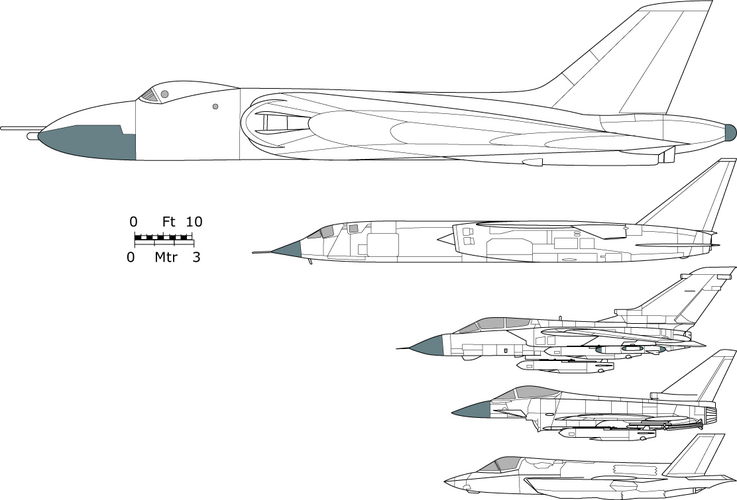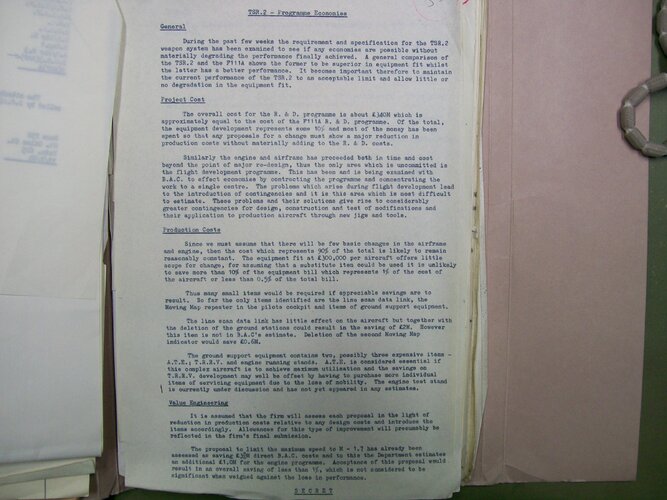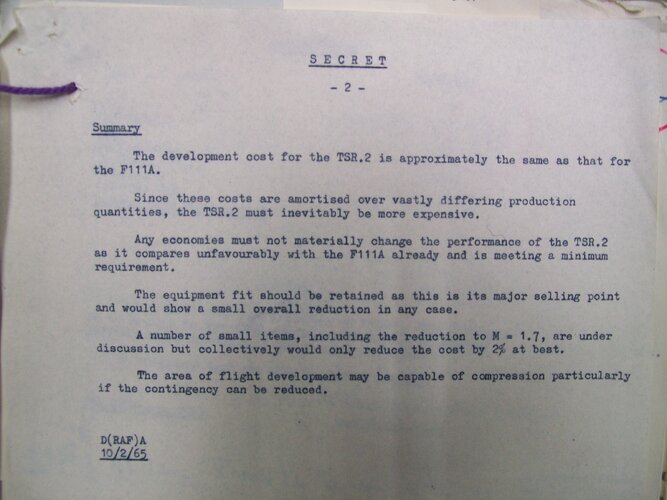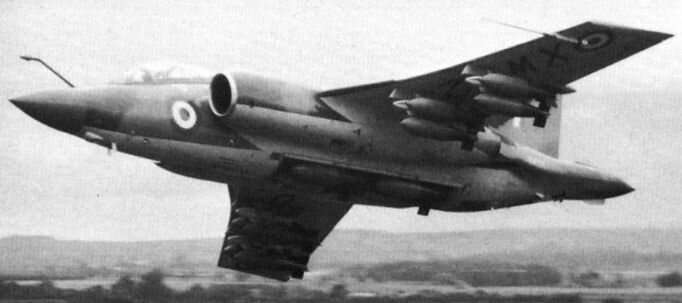Only the F-111F had LGB capability, and only after 1982 when PAVE TACK entered service.
I suppose it depends whether the RAF develops this capability for East of Suez or for Western Europe.
Early Laser-Guided Bombs had Bang-Bang control surfaces and could not be tossed from low-level unlike the later Paveway III. Then there's the issue of Western European weather, with the use of LGBs being curtailed by heavy cloud cover.
Yes you are correct, for some reason I thought the F-111A had trial dropped them over Vietnam in 72-73 but I was mistaken there.
Ironically then the F-111 was limited to 'dumb' bombs outside of its nuclear mission until the 1980s, just as TSR.2 largely would have been, though it would have had Martel for TV-guided strike capability (possibly anti-radar role too if the French version had been acquired) (so would F-111K).
The huge plus point for F-111 was its load lugging capability, its been described as hauling the loads of five F-4s! A total of 31,500lb in max loadout was pretty phenomenal for the time (though in practice load-out was much less, 24 500lb Mk 82 Snakeyes for low-level strikes). TSR.2 had a max load of 14,000lb with only 4,000lb of that external - each one of the F-111s four inner hardpoints were rated at 5,000lb each.
Bucc and Tornado have gotten by without massive wing plyons, so perhaps its less of a serious issue but if the TSR.2s bay had been given over to fuel or Pave Tack during the 1980s, the external options would have been limited. The idea of a 'Big Wing TSR' though could have rectified that, maybe four large 3,000lb rated wing points and two dedicated Sidewinder rails outboard.
Visibility out of those small canopy hatches might have been a limiting factor in low-level tactical strikes too. Its a shame the trainer version never got sorted, it might have enabled a one or two-section blown canopy with much better visibility.
So my dream 1980s TSR SLEP would be: Ferranti inertial nav kit, LRMTS, new blown canopy, upgraded TFR/Blue Parrot, new composite big wing with six pylons (maybe throw in some blown flaps or slat and flap layout for STOL), fuel tank in the bay, upgraded RWR and internal ECM. I still need to mull over an engine for this though, I'm not sure there would be something off the shelf of the right power and size.




